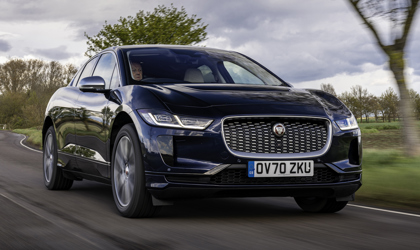Jaguar I-Pace (2018 - 2024)

HSE Black EV400 90kWh AWD 5dr Auto
Let down by the dealer network.
It seemed like a bargain. A luxury car, 2-year warranty, 2-year roadside assist, 2-year MOT, and 2 services thrown in. Free home charger with installation. What could possibly go wrong with an approved used vehicle purchased in March 2023?
- March 2023. Vehicle refused to accept a DC charge at services. Fortunately, 62% remaining on battery and enough to get home to 'granny' charge.
- February 2023. Both the auxiliary battery and starter battery failed. Replaced for less than £105 by Roadside Assist.
- April 2023. Recall letter received for recall H441. Relating to potential fault with High Voltage battery. Applied by dealer at no cost.
- June 2023. High voltage error after a DC charge. Vehicle went into thermal protection mode. Diagnosed by roadside assist as a faulty Battery Charge Control Module (BCCM). Tell tail signs are the hazard light switch remains illuminated, running down the high voltage battery. BCCM reset by roadside assist. Extensive notes made.
- July 2023. Panoramic roof leak. Quoted £11,000 by dealer. After some back and fourth, reduced to £3,500 with dealer contribution.
- November 2023. A second recall letter received.
- January 2024. Vehicle rejected as it had been off the road for 3 months due to various faults. Dealer unable to resolve the BCCM issue. Dealer suggested it might be the Battery Energy Control Module (BECM) but refused to contribute to this and declined authorisation under warranty.
It was a great car when it worked. I could not fault the coachwork. On air suspension it drove comfortably. It felt powerful enough on the roads and sure footed. However, it was let down by a host of issues and dealer support being non-existent. In the end I did not feel comfortable with ownership. When the 12 volt aux battery goes, so do the brakes. It powers an electronic brake booster set-up. Models after 2021 do not have the dubious double 12v set-up. The aux battery works hard naturally and tends to reach end of life around the 3-4 year mark. Proactive maintenance is to replace both batteries rather than risk a breakdown or worse, no brakes.
It is a shame that it is a model being killed off by Jaguar. The manufacturer warranty for the high voltage battery is 80k miles or 10 years, whichever comes first. A battery health report is essential if purchasing used e.g., it will tell you the state of the battery. Mine came back with the lowest cell being reported at 93% which meant my battery was generally in good shape.
A 7 kWh charge from 30% took 6-7 hours. A domestic three-pin socket (granny charge) was 18-23 hours. The battery has a built-in upper buffer so 100% is not a true 100% which is a good thing. Whereas, with some battery electric vehicles, you might be advised not to charge beyond 90% to be kind to your battery and/or the next owner.
Larger 22" wheels? Knock off 10-15 miles off range. Winter driving? Forget the claimed 240+ miles. It is likely 150-170. Summer driving and eco mode? 240 miles of range is possible.
Insurance group is 50U. As has been widely been reported, electric vehicles can be expensive to repair. Technical knowledge is required. When a battery is damaged, the vehicle must be condemned and, may end up in a graveyard of sorts should it catch fire.
Maintenance? No engine oil. Coolant level checks recommended weekly in the owner's book. Motor oil for each electric motor recommended at 100k miles. Brake fluid every 2-years. Otherwise, cabin filters and wipers make for low running costs.
MPG? Not quite the right figure there. It is measured in kW per mile.
To conclude, there is no point owning a car you cannot take for service to a local garage because the dealer holds the expertise and tools. However, when the dealership do not believe in their own product or support it wholly it makes ownership pointless. Older models such as mine (2019) cannot charge at more than 11 kWh at home (three phase supply required). Longer trips must be planned for with charging stations in mind. Public charging is so expensive it defeats the purpose of going electric. Electric is best suited for someone who can charge at home. There are some electric friendly tariffs from some energy providers. Some owner's I knew had a solar-panel set-up at home reducing costs further.


.jpeg?width=205&height=140&rmode=crop)
.jpg?width=205&height=140&rmode=crop)







